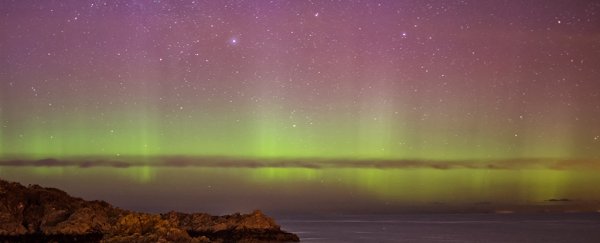Ancient Japanese and Chinese literature describing space weather phenomena in centuries past could help us prepare for the major solar storms of the future, scientists have found.
While solar flares from the Sun have the potential to cause widespread disruption on Earth, they don't leave much of a physical trace for scientists to study, which is why historical texts could be invaluable in uncovering their past existence.
Wondering if writers hundreds of years ago had noted events now beyond the reach of our scientific instruments, Japanese researchers studied two historical volumes – Meigetsuki ("The Record of the Clear Moon") and Song Shi ("History of Song") – covering the period from the 10th to the 14th centuries.
"Combining literature, tree ring dating, and space observation, we have uncovered clear patterns in solar activity and astronomical events," says one of the team, space scientist Hiroaki Isobe from Kyoto University in Japan.
"In the present day, large solar storms can significantly disrupt power grids and satellites. We are ever more susceptible to solar events, and the insight gained through historical documents allows us to better predict and prepare for the future."
In Meigetsuki, Japanese poet Fujiwara Sadaie mentions seeing red and white vapour in the night sky on the 21st and 23rd of February, 1204 – interpreted as a sign of a magnetic storm hitting Earth at the time.
"Red vapour appeared in the north and north-east," he wrote. "It was like a distant mountain burning. It was very dreadful."
Meanwhile a large sunspot, a sign of intense magnetic activity on the Sun, was also recorded during the same period in Song Shi.
"We found about 10 incidents of prolonged aurorae during this period," says another of the researchers, historian Hisashi Hayakawa.
"When these dates were compared with radiocarbon data from tree rings, we noted decreased levels of carbon-14 (indicating increased levels of solar activity) at these same points."
These texts have enabled researchers to build up a chronology of space weather activity, and also revealed that auroras were more prevalent in the maximal phase of solar cycles – when the greatest amount of solar activity and irradiance occurs – all of which gives us a slightly better chance of predicting the next magnetic storm.
Solar storms occur as blasts of particles from the Sun hit the oxygen and nitrogen in Earth's atmosphere and magnetic field. Especially severe solar events, called coronal mass ejections (CMEs), can cause big problems on our own planet.
A major solar storm today could knock out satellites, GPS, the internet, and other communication systems, though the writers of ancient Japan and China wouldn't have had much to worry about beyond mysterious lights in the sky.
The last really significant storm in 1859 gave electric shocks to telegraph operators and produced luminous night-time clouds, but the consequences of another one that big could be much more severe – thanks to technological progress in the interim.
Another problem is no one really knows when the next serious storm will hit, which is why scientists are looking for all the help they can get.
The researchers are now looking to see if any more ancient texts may hold clues that we can use to chart out the history of solar activity and unusual space weather events.
Texts that have previously been ignored in terms of scientific or factual content could have undiscovered nuggets of useful information in them, the researchers say – and any solar storm patterns we identify could help scientists prepare for similar phenomena in the future.
Previously, Fujiwara Sadaie's writings were "not really valued for their scientific specificity" according to Tsuneyo Terashima, Deputy Director at the National Institute of Japanese Literature, who also helped with the study.
"We now realise that Meigetsuki in fact provides a lucid and accurate account of celestial conditions of the period."
The findings have been published in Space Weather.
